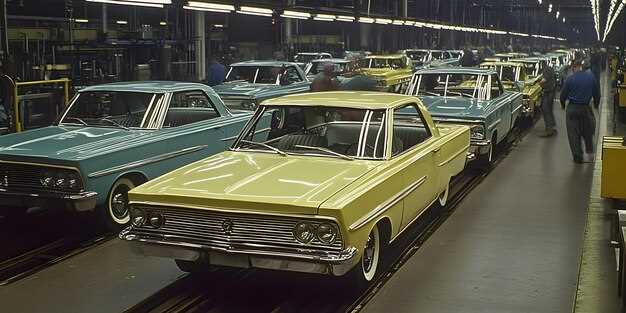
The 70 Series Toyota Land Cruiser has a storied history that dates back to its introduction in 1984. This model has been recognized for its rugged capabilities, making it a preferred choice for both off-road enthusiasts and professionals around the globe. The timeline of the 70 Series emphasizes significant milestones that have contributed to its enduring legacy in the automotive industry.
Initially designed as a workhorse, the Land Cruiser 70 Series quickly gained a reputation for reliability and durability. The model’s versatility allowed it to adapt to various markets, from rugged terrains to urban environments. Over the years, the 70 Series has undergone several updates and modifications, but the core design philosophy has remained intact, ensuring that it continues to meet the demands of its diverse user base.
As we explore the production history of the 70 Series, it becomes evident that this vehicle is more than just transportation; it embodies a lifestyle and a spirit of adventure. The timeline is not just a series of dates; it represents the evolution of a legend that has consistently stayed true to its roots while embracing necessary innovations to remain relevant in a changing world.
Key Milestones in the Development of the 70 Series
The 70 Series Toyota Land Cruiser has a rich history marked by significant milestones that shaped its identity as a robust off-road vehicle. This timeline outlines the notable events in the evolution of the series.
1984: Introduction of the 70 Series
The 70 Series was launched as a successor to the 40 Series, featuring a design aimed at versatility and durability. It was engineered to cater to both commercial and personal usage, establishing its reputation in various markets across the globe.
1985: Release of the Diesel Engine Variant
The introduction of diesel engine options in 1985 marked a key enhancement in the 70 Series lineup. This development satisfied a growing demand for fuel-efficient and high-torque engines, particularly in markets where diesel was preferred.
1990s: Global Expansion and Variants
During the 1990s, the 70 Series saw increased popularity in regions such as Africa and Australia. Various variants were developed, including the troop carrier and single cab options, catering to diverse customer needs and solidifying its position in rural and rugged environments.
2005: Introduction of Airbags and Safety Features
In response to evolving safety standards, the 70 Series underwent significant upgrades in 2005, including the incorporation of airbags and improved braking systems. These enhancements aimed to protect occupants while maintaining the vehicle’s off-road capabilities.
2012: 30th Anniversary Edition
To celebrate three decades of the 70 Series, Toyota released a special 30th Anniversary edition featuring unique styling cues and updated interior comforts. This milestone reflected the model’s enduring legacy and continued demand.
2020: Modernization of Features
The 70 Series was updated to include modern technology such as touchscreen infotainment systems and advanced connectivity options. These improvements kept the series relevant in a changing automotive landscape while retaining its rugged charm.
Each milestone in the development of the 70 Series has contributed to its legacy as an iconic off-road vehicle, loved by enthusiasts and professionals alike. The timeline showcases Toyota’s commitment to evolution without compromising the robustness that defines this legendary series.
Notable Specifications and Variants Over the Years

The 70 Series Toyota Land Cruiser has a rich timeline characterized by distinctive specifications and variants that cater to diverse markets and consumer needs. Launched in 1984, this series quickly gained traction for its robustness, versatility, and durability.
Throughout its production history, the 70 Series has seen several notable specifications. Initially, it was available with a range of engines, including the 4.0-liter 1FZ straight-six and the 3.0-liter 1KZ turbo-diesel engine, allowing it to meet the demands of both urban and rough terrains. Over the years, advancements in engine technology introduced more efficient diesel variants, enhancing fuel economy and performance.
In terms of body styles, the 70 Series has offered several variants, including the two-door pickup, four-door wagon, and the four-door utility. These body styles cater to both commercial and passenger requirements, making the series incredibly versatile.
A landmark in the timeline of the 70 Series was the introduction of the diesel engine variants in the late 1980s, which became popular for their high torque and reliability. The 1990s saw further updates, such as the introduction of improved safety features, including airbags, and updated suspension systems, enhancing passenger comfort and vehicle handling.
In various international markets, specialized variants have been developed, including the Troop Carrier, designed for rugged use in rough terrains and often employed by military and emergency services. This variant showcased the 70 Series’s adaptability and widespread utility.
As time progressed into the 2000s and beyond, the 70 Series continued to evolve, with limited editions and unique trims, such as the ‘Heritage’ and ‘Bubba’ models, that appealed to collector enthusiasts and off-road aficionados. These models often included special features like upgraded interiors and distinctive color options, distinguishing them from standard variants.
The 70 Series Toyota Land Cruiser exemplifies a perfect blend of tradition and innovation, demonstrating a steadfast commitment to reliability across its timeline, making it a hallmark of automotive engineering in the off-road vehicle segment.
Impact of the 70 Series on Off-Road Vehicles and Global Markets

The 70 Series Toyota Land Cruiser has played a significant role in shaping the landscape of off-road vehicles since its introduction in 1984. This series has not only influenced the design and functionality of off-road vehicles but has also left a marked imprint on global markets.
One of the key impacts of the 70 Series can be seen in its durability and reliability, which set a new standard in the off-road vehicle segment. The vehicle’s robust construction and advanced four-wheel-drive system contributed to its reputation as a go-to choice for militaries, mining industries, and adventure enthusiasts worldwide.
- Influence on Design:
- Enhanced Off-Road Capabilities: The 70 Series introduced features like solid axles and high ground clearance, which became benchmarks for future off-road vehicles.
- Modular Design: The versatility of the 70 Series, allowing various body styles and configurations, influenced manufacturers to adopt similar approaches in their designs.
- Global Market Penetration:
- Export Success: The 70 Series has been successfully marketed in numerous countries, establishing Toyota as a leader in the global off-road vehicle market.
- Brand Loyalty: Its reliability has cultivated a strong following, resulting in high resale values and a dedicated fan base worldwide.
The timeline of the 70 Series reflects its adaptability to changing consumer demands and market conditions. From its early days as a workhorse in challenging terrains to becoming a symbol of adventure and exploration, the series has continually evolved while maintaining its core attributes. This adaptability has allowed the 70 Series to remain relevant, even as new competitors emerged.
In conclusion, the 70 Series Toyota Land Cruiser has profoundly impacted off-road vehicle design and has established a robust presence in global markets. Its legacy continues to influence new models, setting the stage for future innovations in the off-road segment.
